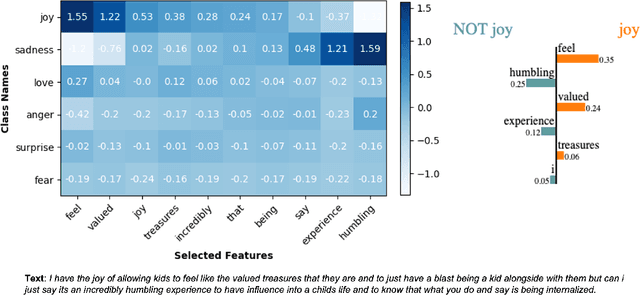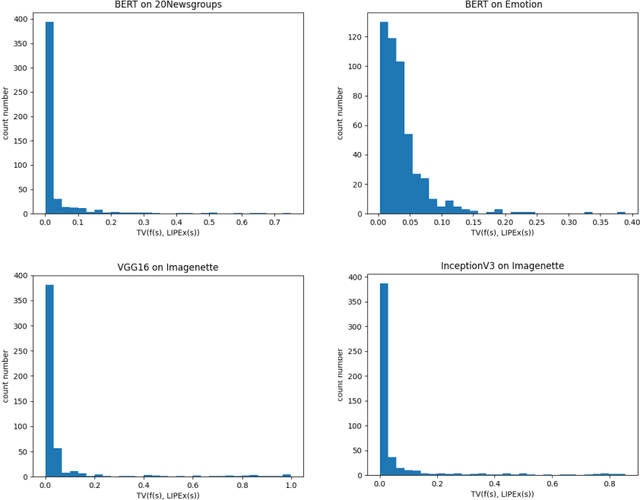LIPEx -- Locally Interpretable Probabilistic Explanations -- To Look Beyond The True Class
Paper and Code
Oct 07, 2023



In this work, we instantiate a novel perturbation-based multi-class explanation framework, LIPEx (Locally Interpretable Probabilistic Explanation). We demonstrate that LIPEx not only locally replicates the probability distributions output by the widely used complex classification models but also provides insight into how every feature deemed to be important affects the prediction probability for each of the possible classes. We achieve this by defining the explanation as a matrix obtained via regression with respect to the Hellinger distance in the space of probability distributions. Ablation tests on text and image data, show that LIPEx-guided removal of important features from the data causes more change in predictions for the underlying model than similar tests on other saliency-based or feature importance-based XAI methods. It is also shown that compared to LIME, LIPEx is much more data efficient in terms of the number of perturbations needed for reliable evaluation of the explanation.
 Add to Chrome
Add to Chrome Add to Firefox
Add to Firefox Add to Edge
Add to Edge